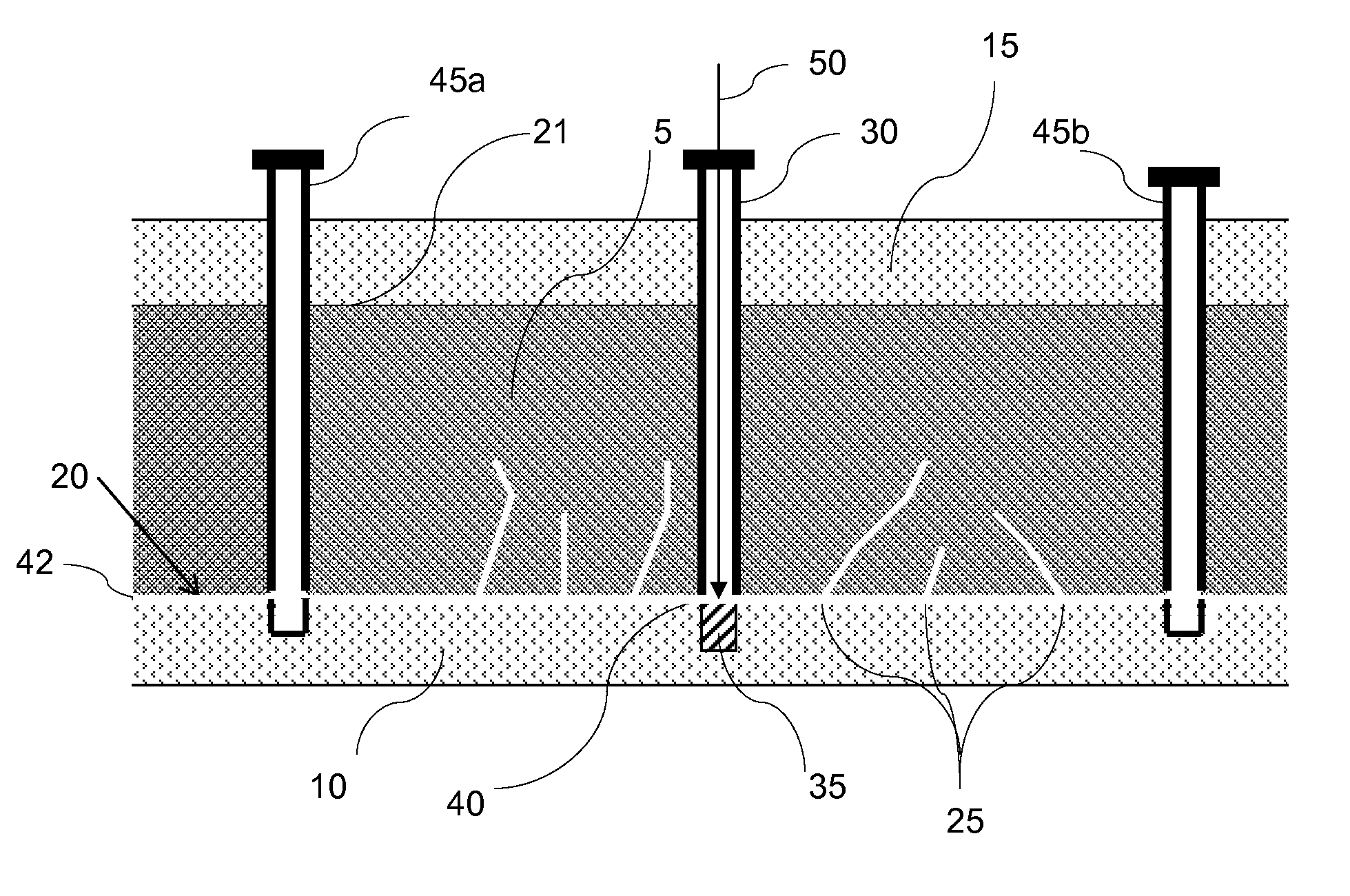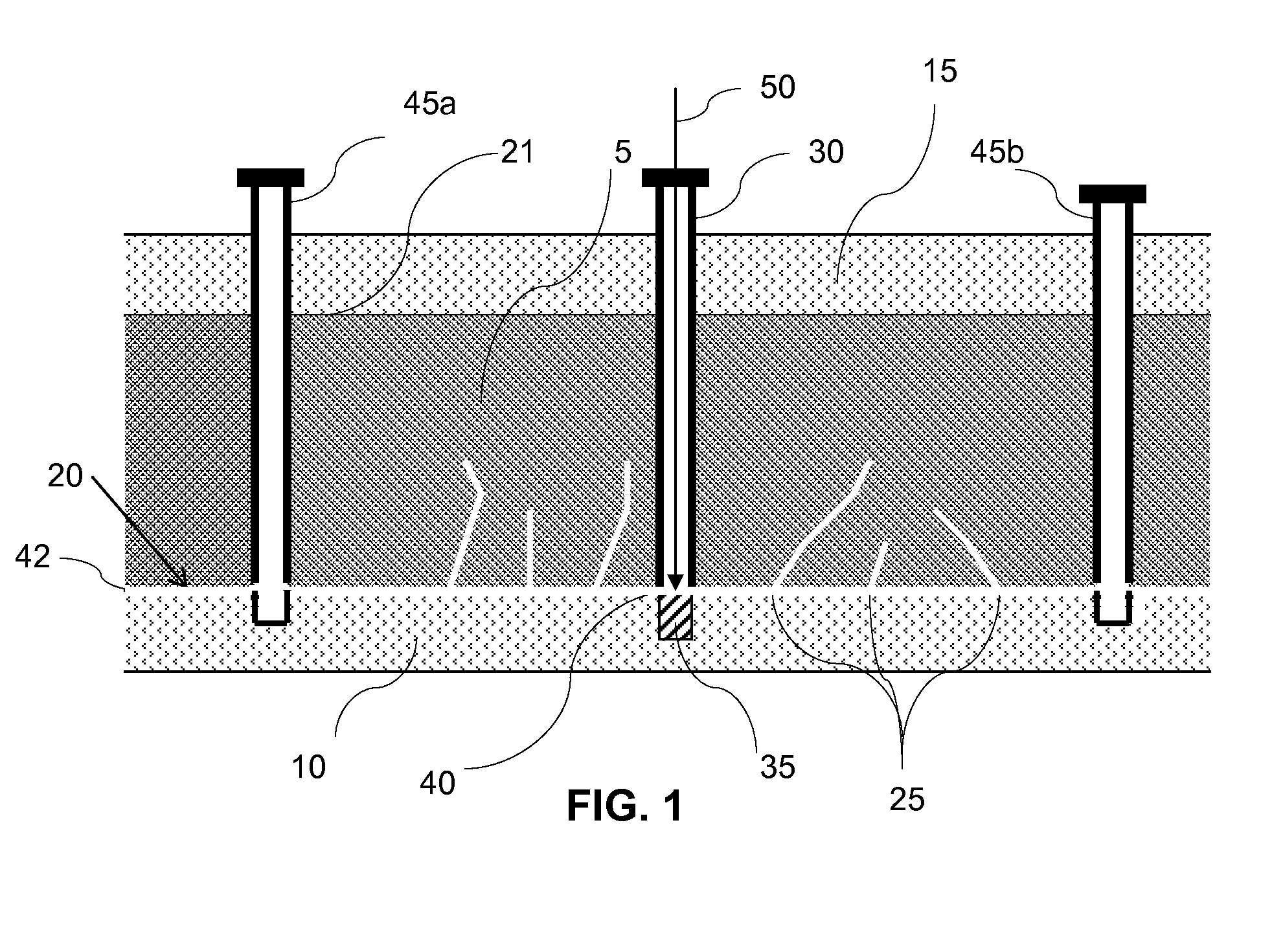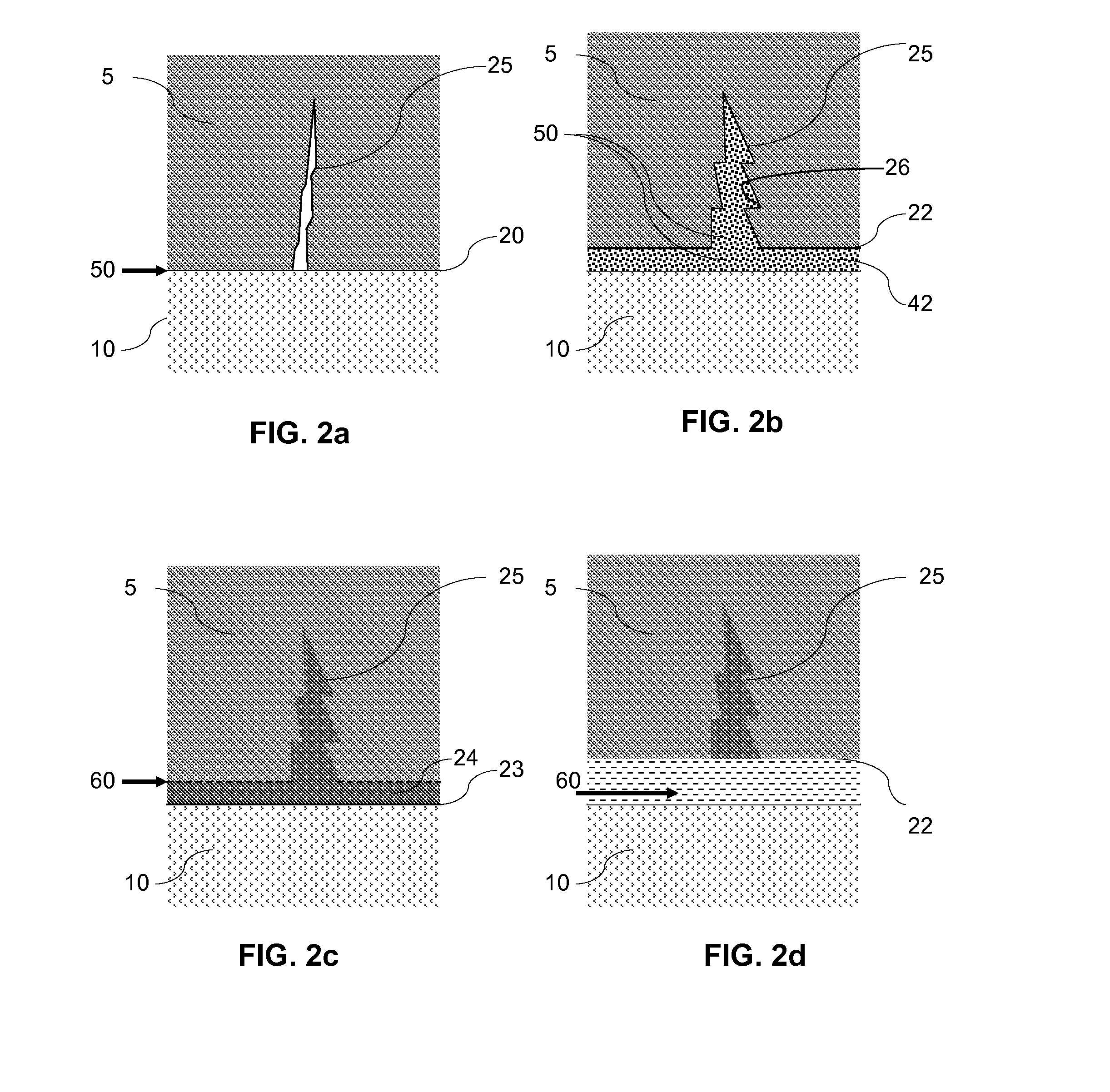In situ method for sealing undesirable transverse fractures under hydraulic pressure during lithological displacement of an evaporite deposit
a technology of lithological displacement and in situ method, which is applied in the preparation of alkali metal sulfite, alkali metal carbonates, borehole/well accessories, etc., can solve the problems of increasing the difficulty of recovering trona by mechanical mining methods, affecting the production cost of soda ash, and affecting the quality of trona
- Summary
- Abstract
- Description
- Claims
- Application Information
AI Technical Summary
Benefits of technology
Problems solved by technology
Method used
Image
Examples
example 1
[0358]A solution saturated in sodium bicarbonate was made by dissolving 425 g NaHCO3 in 2.5 liters of water. The solution was heated to 65° C. and decanted to remove excess sodium bicarbonate crystals. This saturated solution was used as a sealing agent in a sealing test performed on a solid 1.7-kg trona block from bed No. 17 in Green River, Wyo. One hole of ¼-inch in diameter and 1.5-inch in depth and a second hole of ⅛-inch in diameter and 1.125-inch in depth were drilled into the trona block. The block was submerged into the saturated solution at 65° C. The solution was allowed to cool at room temperature (19° C.) to precipitate sodium bicarbonate. Aliquots of the solution were taken out for a double endpoint titration measuring sodium carbonate and bicarbonate in the remaining solution were performed over time. At the same time, temperature of the remaining solution was measured. When the solution temperature dropped to about 36° C., crystals started to form and covered the tron...
examples 2 to 7
[0361]Six sealing tests were performed on another solid trona block from bed No. 17 in Green River, Wyo. Six holes of ⅛-inch in diameter and 2-inch in depth were drilled into the trona block.
[0362]A solution saturated in sodium carbonate and a supersaturated sodium carbonate slurry were made. Solid sodium carbonate was added to water heated at 65° C. in an amount exceeding the solubility limit of sodium carbonate at 65° C. The mixture was allowed to settle; the supernate provided the saturated solution of sodium carbonate while the settled solids with some of saturated solution provided the slurry of sodium carbonate. Similar saturated solutions and slurries were made for sodium sesquicarbonate and sodium bicarbonate.
[0363]An aliquot for each saturated solution / slurry was added to one of the six holes. The solutions / slurries were left to cool for 24 hours, and the openings of the holes were observed for presence of crystals formation.
[0364]All three holes which received slurries wer...
example 8
[0368]Several small (¼-inch diameter) holes were drilled in a block of trona, and trona insolubles (tailings) were injected into the holes. The insolubles used in this example were taken from a thickener underflow in a soda ash refinery, and had around 12% by Total Alkalinity as Na2CO3; about ⅓ of the volume are insoluble fines. This material set up much slower than previously tested materials and did not bond to the trona walls. The resulting plug was brittle.
PUM
 Login to View More
Login to View More Abstract
Description
Claims
Application Information
 Login to View More
Login to View More - R&D
- Intellectual Property
- Life Sciences
- Materials
- Tech Scout
- Unparalleled Data Quality
- Higher Quality Content
- 60% Fewer Hallucinations
Browse by: Latest US Patents, China's latest patents, Technical Efficacy Thesaurus, Application Domain, Technology Topic, Popular Technical Reports.
© 2025 PatSnap. All rights reserved.Legal|Privacy policy|Modern Slavery Act Transparency Statement|Sitemap|About US| Contact US: help@patsnap.com



